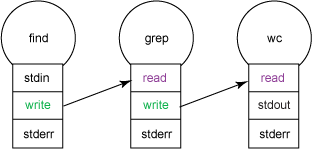Pragmatic Programmer book has lots of solid advice and it was published 18(1999) years ago and all that advice is still relevant.
It has one section on Stone Soup & Boiled frogs.
Remember the Big Picture
Read Pragmatic-Programmer-Journeyman-Master book if you have not read it.
It has one section on Stone Soup & Boiled frogs.
Boiled frogs
This theory is not tested but it is said that if you take frog and drop it into boiling water, it will jump out of it but if you place frog in pan of clod water, then gradually heat it, the frog won't notice and slow increase in temperature will be not noticed by frog and it will be cooked.
Stone Soup
3 soldiers returning home after war were hungry. When they saw the village ahead their spirits lifted they were sure that people will give them food. But doors were locked and windows were closed. After many years of war, the villagers were short on food and hoarded what they had.
The soldiers boiled a pot of water and carefully placed three stones into it. The amazed villager came out to know more about it.
Soldiers explained that this is "Stone Soup" and went to to add "although some say that it tastes even better with few carrots"
Villagers ran off and got basket of carrots and asked "is that ok ?"
"Well" said the soldiers "a couple of potatoes give it body"
Another villager ran and got some potatoes and each of villager slowly taking stuff out and eventually they had produced large pot of steaming soup.
Soldiers removed stone and sat with villager and everybody enjoyed meal.
What do we learn ?
Stone soup tells that you need act as catalyst to bring the people together so that they can jointly produced something that could not have done themselves and eventually every one wins.
Does this sound like issues that we face every day to get work done in team ?
This mindset is called "start-up fatigue"
If you are stuck in getting you idea then take out stones, build something small but well enough to say "it would be better if we add..........." and pretend it is not important.
Sit back and wait for them to start asking for the stuff you originally wanted.
People find it easy to join to the ongoing success :-)
Lets look at frog story.
Don't be frog, keep eye on the changes happening around you , in your team, company, industry.
Constantly review what is happening and take some action.
Don't become frog, tech world is changing fast, new skills are required, new approach is required , new tools, lot of un-learning is required to learn something new.
Frog will not noticed change, if you don't want to frog then learn to embrace the change.
Moral of story is
Be a catalyst for changeRemember the Big Picture
Read Pragmatic-Programmer-Journeyman-Master book if you have not read it.



















